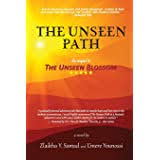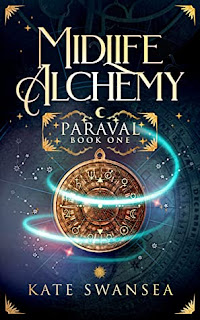New Book Alert Best of the Best 2021
By Julie Sara Porter
Bookworm Reviews
Spoilers: 2021 was well not a great year. With a struggling economy, different strands of Covid, an insurrection, and political unrest, there are many reasons to stay inside and curl up with a good book.
There have been many great books that I reviewed this year. So many that I have separate lists for New Book Alerts and Weekly Readers. Unfortunately, I didn't get to read that many classics, but I highly recommend the ones that I did get to review: Nancy Drew Series Books 1-10 by Carolyn Keene, Anne of Green Gables by Lucy Maud Montgomery, The Collected Stories of Franz Kafka, The Great Gatsby by F. Scott Fitzgerald, and Women's Weird: Strange Stories by Women 1849-1949 Edited by Melissa Edmondson. I may phase out Classics Corner next year, we'll see if I get as many requests for Weekly Reader or New Book Alerts.
Now without further ado, the best of New Book Alerts, books published in late 2020-2021. (Some of these are series that count as one.)
20. Fractured Lives: An Angela Hardwicke Science Fiction Mystery by Russ Colchamiro
Colchamiro brilliantly combines the procedure and plotting of a murder mystery with the large themes of technology and interconnectivity of Science Fiction as private investigator, Angela Hardwicke tries to solve who took part of the soul of a college student. What really stands out is the setting of Eternity which is the center of the entire cosmos. Many characters have jobs that keep the cosmos running like Patches who repair tears and holes in the universe and Celestial Designers who design the positions of the stars and planets.
19. The Greatest Hoax On Earth: Catching Truth While We Can by Alan C. Logan
Logan's detailed and brilliant expose of Franklin William Abagnale Jr., a reformed con artist who has been selling the story of impersonating a pilot, surgeon, attorney, college professor and forging millions of bad checks before he was 21. The reality, according to Logan, is that most of Abagnale's criminal career was fabricated and made grander than it was. Using newspaper articles, court records, and testimonies from people who knew Abagnale, Logan reveals a man in love with his own fame and story and selling it to anyone who would listen. In a way, Abagnale really is the greatest con artist of them all.
18. The Cabin Sessions by Isobel Blackthorn
Blackthorn's strange ominous short novel is about a bizarre Christmas Eve at a rural bar/nightclub where musicians of dubious talent and club goers have to deal with love triangles gone awry, buried resentments, years long murder mysteries, and the prediction that one of the characters will die before the night is over. The characters are a seedy depraved bunch including Adam, a guitarist overcoming an abusive relationship, Philip and Eva, a somewhat disturbed brother and sister with a history of violence and a strange animosity and attraction towards each other, and Cynthia, a dulcimer player and witch with very spooky foresight. It's Christmas from Hell and we're all invited.
17. Stories From The Vale: Gift of The Elven by Kathy Ann Trueman
The sequel to Trueman's Path of the Dragonfly builds on the world that she created and deepens the previous book's themes by using the Epic Fantasy genre to comment on real life issues of prejudice and intolerance. Prince Arlin, who has the ability to fly, and Fiella, an apprentice bookseller who can manipulate minds, are two of several people born with unique abilities that have ostracized them from a frightened and vengeful society. The two struggle through their own personal animosity and an enemy of Arlin's family while trying to find a place to belong. Besides introducing us to this new concept and new characters, we also see how Trueman's original characters grew and adapted over the years and how they appreciate and regret some of the choices that they made.
16. The Unseen Path by Zlaikha Y Samad and L'mere Younossi
The second sequel on this list, Samad and Younossi's previous book, The Unseen Blossom was an allegorical dream like fantasy as Princess Zuli and Lamar, a commoner, go on a magical journey to find a fig blossom. Along the way they learn lessons of equality, understanding, acceptance, and love.
The Unseen Path is set after the dream as the two lovers have to face the reality of Afghanistan in 1979 during the start of the Soviet-Afghan War. The two take the theoretical lessons that they learned and put them into practical use in a world destroyed by war. The Unseen Path is like waking up from a dream and turning that dream into reality.
15. Canvas of Time by Amelie Pimont's deeply haunting and meditative love story about reincarnation and love that lasts through the centuries. Eli and Sarah find, fall in love with, and lose each other through Ancient Egypt, early 20th century France, modern day New York City, and a spaceship. The details to the various time periods are amazing and Eli and Sarah are memorable leads over the years. Pimont brilliantly juggles genres from Shakespearean Style Tragedy, to Historical Fiction, to Magical Realism, to Science Fiction while staying true to the characters and their ever changing world.
14. Kid Lit: An Introduction to Children's Literature by Tom Durwood
Durwood's book is a series of essays by various academics who take a serious analytical look at different aspects to children's literature as well as the ever changing definition of what "children's literature" actually is. Durwood and other authors look at various touchstones as The Lion King, the Star Wars franchise, Tintin, Tarzan, the Binti Series, His Dark Materials, Pixar films, Comic Books,and Harry Potter and take fascinating looks in terms of classicism, historical context, ethnicity, race, gender roles, sexuality, philosophy, the changing perspectives of the characters, and where certain works fit in terms of their structure. It's a definite eye opening experience to what we and children read and watch.
13. Pride of Ashna (Foundra Series 02) by Emmanuel W. Arriaga
Arriaga's Science Fiction series is a space opera in the style of Star Wars with planets, alien races, and struggles that have nothing to do with our little blue dot in the Universe. This book opens up with various conflicts among the Ashna Maidens, a race of warrior women, the Huzian Alliance, an organization of various aliens species, the intergalactic crew of the Empress Star spaceship, the Enesmics, a group of powerful immortals, and Sephan the Deceiver, a diabolical Enesmic who wants to destroy everyone. The world building is beyond impressive as Arriaga writes about several planets, terms, and alien races. The characterization is wonderful as various characters get memorable moments in this brilliant ensemble. The two standouts are Serah'Elax Rez Ashfan, an Ashna Maiden and hero, who gets to the root of the Maiden's prejudice and arrogance and Neven Kenk, a master of technology and average guy trying to make his way in a changing universe.

12. The Second Mrs. Thistlewood by Dionne Haynes
Haynes' novel could be considered a deconstruction of Gothic works like Wuthering Heights and Rebecca with a more feminist perspective. It reminds Readers that if they expect to marry Heathcliff, a dark brooding bad-tempered character, don't expect to be happy. Susan Thistlewood longs to end her marriage to the abusive Arthur but divorce laws in the 18 teens forbid unless certain circumstances. Susan's character is strengthened as she endures her unhappy marriage but secretly plots various ways to end it and support herself when it does. It's definitely a hard critical look at the Gothic Romance and all of its implications.
11. Behind The Veil by E.J. Dawson
Dawson's sinister and spooky Horror novel shows darkness in the Spirit and Human Worlds. Medium Letitia Hawkins is tortured by visions depicting how people died. When she decides to help a young girl who is also psychic, Letitia sees visions of a pedophile and child murderer and his non stop rampage that continues after death. Besides a terrifying ghostly antagonist, we also get a dose of human cruelty as Letitia recalls her time in a mental asylum and the torture that she experienced at the hands of the employees. If the ghost doesn't scare, the asylum passages certainly will.
10. Orange City by Lee Matthew Goldberg
Of the Dystopian Science Fiction novels read this year, and there were many, Goldberg's is one of the best. It is a sharp biting satire of consumerism, advertising, fame, and what people will go through to survive in an oppressive world. In a city run by a sinister figure known only as The Man, Graham Weathered is chosen to be a product tester for a new addictive soft drink called Pow. As he drinks Pow's various flavors, Graham's personality changes and he learns disturbing secrets about his role and The Man's real goals. Goldberg provides some interesting touches such as Graham's attention becoming focused on specific colors that match the flavors he drinks, including him visiting clubs with names like the Red Rum, Blue Moon, Citrus Club, and Lime Lounge. These are brilliant bits in a very clever book that is a highlight in an overfilled genre.
9. The Love of The Tayamni Series 1-3 (The Love of The Tayamni, The Judgement of Seth, Shaare Emeth: Gate of Truth) by T.A. McLaughlin
The first three books in McLaughlin's Science Fiction series have tropes of ancient aliens, time travel, and interplanetary travel as well as Earth themes of sexuality, gender identity, and self actualization. Batresh, a hybrid of Earthling and an ancient alien race called the Tayamni, travels through time to protect Denny Shields, a young man destined to become The Matriarch, a leader who will lead the planet to a New Age of Enlightenment. Most of the books consist of Batresh and Denny facing devious alien races who use humanity's selfishness and prejudice against them. They also come to terms and accept their identities and make peace with themselves.
8. In Women We Trust by N.H. Sakiha
Sakiha's important book reminds Readers that women's rights can never be taken for granted and should always be fought for. When her brother is charged with a crime, Badri, a young Pakistani woman is also arrested even though she wasn't even where the crime took place.
The book is an indictment against legal and judicial systems that don't treat the people that go through them as human beings and often treat women in contemptible ways.
7. Mazarine Dreamer by Francessca Bella
Bella's beautiful poetic novel is an experiment gone right. The book is entirely written in rhyme, creating a novel length poem that hearkens back to the works of the Romantic Era. Flavia, a psychologist, travels back in time to her previous incarnation of a Renaissance noblewoman who gets involved in a love triangle that is destined to end badly. While Reincarnation and Time Travel were frequently written themes this year, Bella's writing style gives the subject a creative and poetic polish.
6. The Illustrated Colonials Trilogy (The Pact, Home Fronts, Saratoga) by Tom Durwood
Durwood shows that he can not only analyze other people's Children's Literature, he can write a pretty good Kid's Lit series of his own. In an Alternate Universe of the 1770's, six young people from all over the world including Prince Mahmet, from Ottoman Turkey, Jiyayi Mei Ying from China, and Gilbert the Marquis de Lafayette, attend a school for Young Monarchs in Alsace-Lorraine to learn about liberty, freedom, and other enlightenment philosophies. What starts out as a group of bickering argumentative young people, they grow into mature more thoughtful adults who fight for each other and the people in their countries and beyond. It's a beautifully illustrated and well written series that teaches about friendship, loyalty, selflessness, and unity.
5. Lady Be Good: The Life and Times of Dorothy Hale by Pamela Hamilton
Hamilton's Fictionalized Biography brings to life Dorothy Hale, a long forgotten actress and dancer who was mostly known for falling, jumping, or was pushed out the window of her Central Park apartment, leaving much speculation that the cause of death was suicide. Instead of focusing on her death, Hamilton concentrated on her life. Hale is depicted as a bright zestful woman full of life and at the center of a colorful world in New York's Cafe Society and The Golden Age of Hollywood. The book is brimming with interesting cameos of some of the best and brightest of the 1920's-'30's with Hale acting as a lovely whirlwind gathering many friends and lovers around her.
4 The Secret Life of Sofonisba Anguissola by Melissa Muldoon
Muldoon's clever Historical Fiction tells the story of portrait painter, Sofonisba Anguissola, with elements of Romance, Adventure, and Murder Mystery. An elderly Anguissola recalls her life with enchanting details so her listener (and the Reader) can spot the lie in her story. The painter's life is well captured including her education with a progressive family, her time in the Spanish court painting and spying for Prince Phillip, and her romances with a pirate and the Duke of Alba. After awhile, Anguissola's story is so fascinating that we don't care to find the lie.
3. The Long Game: An Amy Radigan Thriller by Ian Conner
Conner's intricate and complex Political Thriller is large in various plot angles such as an explosion on a California pier, the murder of a journalist in Saudi Arabia, an assassination attempt on the Vice President, and an affair between the President and a Chinese ambassador, that end up linked together. It's a wide reaching conspiracy that a few characters, most notably Vice President Susan Ralston and investigative journalist, Amy Radigan work to find out the truth. It's a wide encompassing book that weaves all of the threads perfectly.
2. Midlife Alchemy Book 1: Paravel by Kate Swansea
Swansea's Fantasy proves that teens and young adults are not the only ones that can have fun in a Fantasy world. Dr. Elise Clair, a 45 year old dental hygienist is asked to move to a cozy postcard perfect town to become their dentist and their Warden, or rather Alchemist who studies magic and protects residents from demonic creatures called umbra. It's a terrific series with a lead with a desire to learn and an older woman's patience and resilience. It's definitely a fantasy series for the rest of us.
1.The Bookbinder's Daughter by Jessica Thorne
Thorne's wonderful Fantasy is about the magical library to end all magical libraries. Sophie Lawrence returns to work at the Ayredale Special Collection which she left after her mother disappeared. The Collection stores various magical tomes and spell books that if opened can cause great destruction. The library and its eccentric cast of Keepers, particularly Tia, a flamboyant and flashy archivist with a tragic past, are a brilliant harmonious union of memorable characters and setting.
Honorable Mention: Cinema 7 by Michael J. Moore, Enemy by Kimberly Amato, What Immortal Hand by Johnny Worthen, Champagne Widows by Rebecca Rosenberg, My Gift To The World: 24 Inventions & Ideas to Eradicate Poverty, Disease, Death, and The Energy Crisis by Kaloyan Valentin Danchev, The Family Man: Getting Away With Murder by Anna Willett, Kolkata Noir by Tom Vater, Rhapsody by Mitchell James Kaplan, Birthrights by Carly Rheilan, Never Never by Liz Butcher, Court of the Grandchildren by Michael Muntisiov and Gregory Finlayson, The Sun Casts No Shadow by Mark Richardson, Under The Volcano: Quito Murder Mysteries by William Graham, Central City by Indy Perro, Kill Three Birds: A Kingdom of Aves Mystery by Nicole Givens Kurtz, The Leviathan Trial by Oliver Madison, Something For Bebe by Neil A. White, The Naughty Librarian and Other Sexy Stories by Kris Kassady, The Artist and His Billionaire by CJ Turner, WIFI: Wizarding Information For Invoking by James Huntington






























